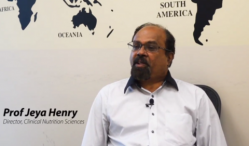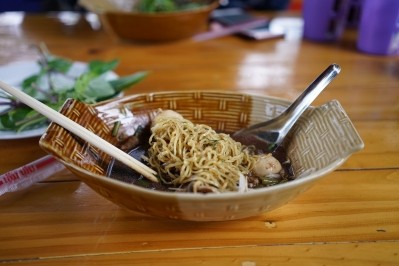FOOD VISION ASIA
Diabetes in Asia: Food and nutrition industry action an economic and social imperative

Speaking at our Food Vision Asia summit in Singapore, Prof Jeya Henry, from Singapore’s Clinical Nutrition Research Centre, said industry had to help academics and regulators use diet at the main weapon against the disease.
Outlining how Asian’s were more predisposed to diabetes than Caucasians, he said the region was “the epicentre of diabetes because Asian’s respond to food differently.”
He said the region was charaterised by the thin-fat phenomenon, where people who were seemingly of a reasonable weight were frequently diabetic.
“BMI is not a proxy indicator of diabetic risk in Asia,” he said.
More than half of the world’s 400m people with diabetes are in Asia, although Prof Henry believes that for every two people who are aware they have the condition, there is a further one who does not.
“The numbers are profoundly high. I’d say there are maybe 1bn people affected globally, including those with prediabetes. We urgently need to look at using diet for a paradigm shift.”
Prof Henry leads a team in Singapore looking at new product innovation, reformulation and functional ingredients that can help fight diabetes in an Asian setting.
“We need solutions and products that Asian’s actually want to consume, and use ingredients that are common to Asia.
“I’m not sure how many of these innovative products will come from MNCs, I suspect it will be from smaller companies because they really see the opportunities.”
Economic activity
He argued there was a social and economic argument to innovate in this space in Asia.
Unlike in Europe and the US where many people are affected by diabetes later in life, in Asia it affects the younger population at the time they are most economically active.
“We also have a situation here where most of foods we consume in Asia are high GI foods, which inevitably leads high GI responses. We need to make foods that are high GI become medium or low GI through the removal or addition of nutrients,” he added.
“The good news is that we are starting to see a revolution around ingredients to reduce these problems.”
That said, this wasn’t always filtering down into a raft of new products, he said.
“There are incredible opportunities for new food products and innovation that aren’t yet been taken,” he said. “We need more action.”
“The other challenge for food companies is to look at people below the poverty line. If you think you can’t make money there, think again, but there is also a social obligation to act here as well.”











